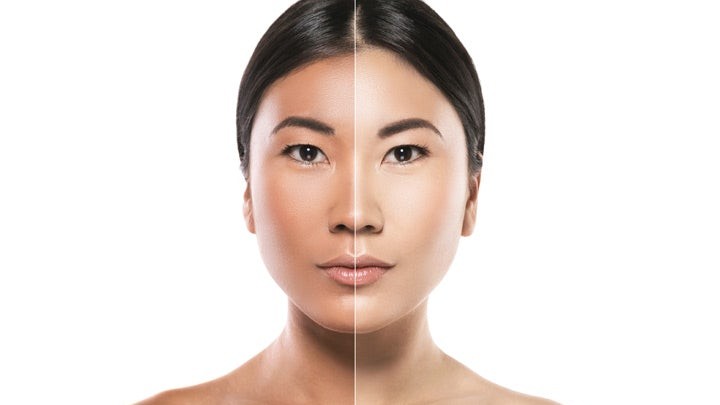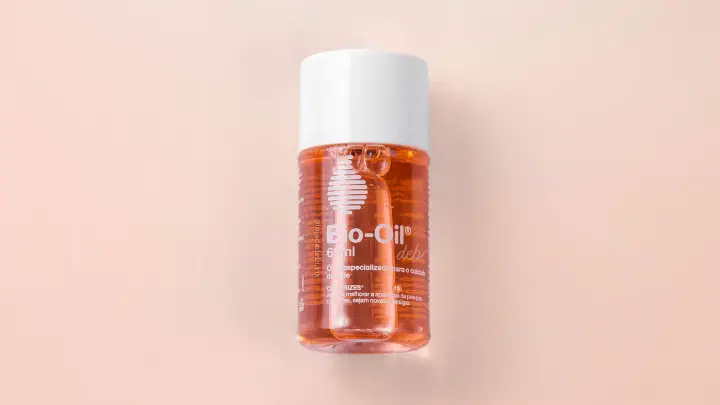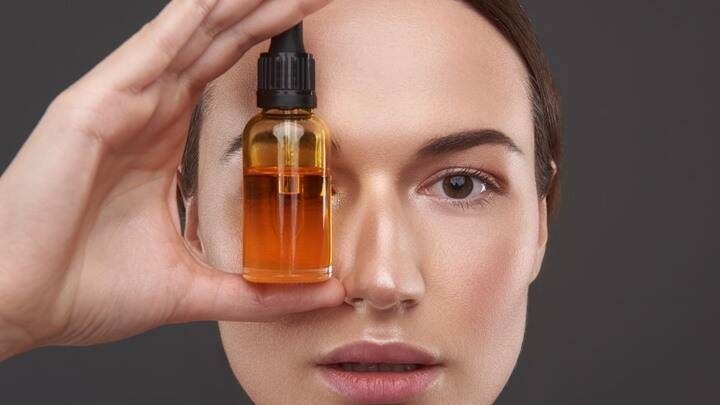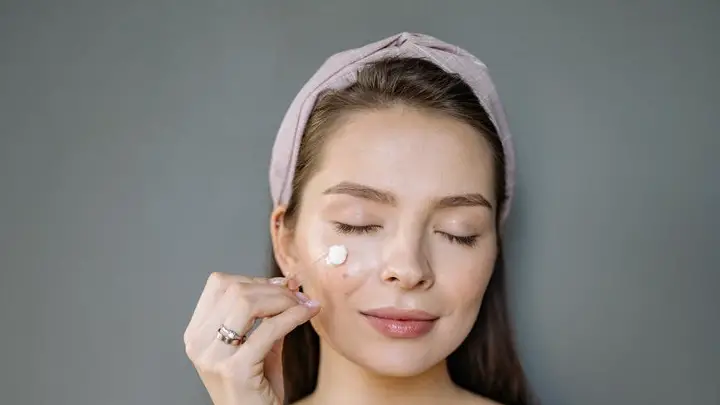Are you looking for skin-lightening treatments to get that fair, even, and smooth skin? If yes, then you are in the right place.
Due to environmental factors, we all lose our glow and fairness as we age. Pollution, stress, and even unhealthy habits tend to make our skin dull, dark, and full of discolorations.
To get rid of these unwanted effects and bring back your youthful glow, your best option is to go for skin-lightening treatments. This article discusses the most effective treatments for lightening skin tone and reducing hyperpigmentation. Read on to find out.
What Is Skin Lightening?
Skin lightening, also known as skin bleaching, is the term people use to describe the process of reducing the melanin content of the skin to make it appear lighter.
This process also helps to reduce the appearance of dark spots, acne scars, freckles, age spots, and other kinds of hyperpigmentation.
Skin lightening can be done with or without a doctor’s prescription and can be performed at home or in a medical facility. Regardless of how it’s done, skin lightening help to obtain beautiful, healthy, skin that is fairer in tone.
Treatments for Skin Lightening
People have used skin-lightening treatments for thousands of years and it has become a common thing in many areas of the world. Though not all are approved by medical doctors, many are still marketed as safe and effective ways to lighten skin color.
Here are some of the most common treatments for skin lightening:
1. Skin Lightening Creams
You can find a great variety of skin-lightening creams on the market today. Many of these creams not only lighten the skin but will also even it out, get rid of blemishes, and reduce age spots.
Here is a list of some ingredients to look for when buying these creams:
Hydroquinone
This ingredient not only inhibits the creation of new melanin but also breaks up existing melanin deposits in the skin, allowing them to be washed away.
Hydroquinone comes in both prescription and non-prescription strengths; the prescription strength is more effective. However, some countries have banned the use of this ingredient, as it can cause severe side effects when misused.
Kojic acid
This is an organic compound of fungi origin, commonly found in the Japanese mushroom, koji, which people have used as a food additive for hundreds of years. This acid is available in many creams and lotions and when rubbed on the skin, helps to lighten skin color naturally.
Alpha arbutin
Derived from bearberry, this ingredient prevents skin cells from producing melanin, the pigment responsible for skin color and protecting against ultraviolet rays.
Tretinoin
This form of vitamin A lightens skin by increasing cell turnover rates, so it promotes faster skin exfoliation and restoration. The result of this process is a reduction in the amount of melanin that your cells produce.
Bear root extract
This plant helps prevent melanin production in the skin by blocking tyrosinase enzymes that would otherwise catalyze the process of producing melanin. It also has antioxidant properties that can help protect your cells from free radical damage and inflammation.
What are the side effects of skin-lightening creams?
There are many side effects associated with the use of skin-lightening creams. Some people may experience minor allergic reactions such as itching or rashes, while others experience severe side effects such as:
- Skin darkening (hyperpigmentation)
- Skin irritation and redness
- Thickened, scaly skin (lichenification)
- Increased sensitivity to sunlight and sunburns
- Increased risk of skin cancer (melanoma)
How do you avoid these side effects?
The two most important steps you can take to avoid side effects from using a skin lightening cream are to:
- Read the package instructions thoroughly. Be sure you understand any warnings and use the product according to instructions.
- Test the product on a small patch of skin before applying it to your entire body. This will help determine if you have an allergic reaction to any of its ingredients.
- If you experience an allergic reaction, discontinue use immediately and contact your doctor or dermatologist.
2. Skin Lightening Injections
Skin lightening Injections involve numbing the treatment area with a cream or gel before injecting a precise dose of a chemical compound known as a “depigmenting agent” directly into the skin.
The agent works to inhibit the formation of additional melanin, which gives skin its color. By interrupting the natural production of melanin in the skin, the agent helps lighten skin and reverse discoloration caused by excess melanin production.
Skin lightening injections tend to be more effective than creams for lightening skin and reducing discolorations. This is because the active ingredient is injected directly into the skin, so it penetrates deeper than topical products.
How long do skin lightening injections last?
The results from skin lightening injections can last anywhere from 3 to 6 months on average; however, most patients opt for regular maintenance sessions to help maintain soft, even-toned skin.
What are the potential side effects?
Skin lightening injections are not to be taken lightly. There are several potential side effects that you should be aware of before going under the needle. These include:
- Infection – Although your practitioner should always wear sterile gloves, there’s still a risk of infection if they make an error while injecting your skin.
- Allergic reactions – All injectable products carry the risk of causing an allergic reaction. Signs that you may be experiencing an allergic reaction include hives and facial swelling. If you notice these symptoms developing, seek immediate medical attention.
- Discoloration and scarring – If you experience any discoloration or scarring around the area where you had the injection, immediately contact your doctor.
3. Chemical Peels
Another way to lighten your complexion is through chemical peels. These treatments involve the use of chemicals to remove the upper layers of the skin (epidermis) to reveal the fresh layer underneath.
The effects of a chemical peel will depend on what type you go for and how deep the chemical penetrates your skin. A fruit acid peel is usually very simple, while a TCA (trichloroacetic acid) or phenol peel goes deeper into the skin layers.
How long does it take?
Chemical peels typically last from 15 to 30 minutes. Experts often advise patients to avoid using make-up that day so the chemical peel can penetrate the skin more effectively.
Are there any side effects?
Yes, there are side effects. Some patients may experience temporary redness, flaking, peeling, or swelling after the procedure, while others don’t have any visible side effects at all.
4. Skin Lightening Pills
Skin lightening pills, also known as bleaching pills, are pills that contain ingredients that remove dark spots, freckles, and other colorations of the skin.
When used properly, they can help produce a much lighter complexion in a very short period (usually just a few weeks).
After a few weeks, you should notice a difference in your skin. Keep taking the capsules, and your skin will keep getting lighter. The longer you take these pills, the lighter your skin will be, so don’t stop taking them until you reach your desired skin tone.
What are the side effects of skin lightening pills?
Skin lightening pills can leave your skin extremely sensitive to sun exposure. So be sure to wear sunscreen and limit your sun exposure while using these creams if you want to prevent sun damage.
Skin lightening pills can also cause the skin to become discolored and blotchy. This discoloration is usually caused by an increase in melanin production resulting from an uneven reduction in pigmentation levels.
The solution for this side effect is either reducing the amount of cream used or discontinuing its use altogether for a few weeks until your skin color returns to normal.
5. Laser Treatments
Laser treatments are a form of cosmetic procedure that permanently reduces the appearance of blemishes, even out skin tone, and produces lighter skin.
This procedure is generally performed in a medical facility and takes about an hour. During the procedure, a laser beam penetrates the top layers of your skin to target and destroy melanin-producing cells.
Melanin is responsible for skin pigmentation, so when your body repairs itself, new, lighter-colored skin forms. The results are permanent, but you need multiple treatments to completely lighten your skin and clear unwanted discolorations.
Laser treatments are generally safe and effective, but it’s still important to discuss your options with a dermatologist before proceeding. The dermatologist will discuss your options based on their findings after you have undergone a physical examination.
It is also important to take note of the recovery period that goes with each method, as some may take longer than others. It’s best to pick an option that matches your lifestyle so that you can stay active while you heal.
How much do laser treatments cost?
Laser treatments typically include multiple sessions, with each session ranging from $300 to $700 on average.
However, some medical spas offer lower-priced treatments depending on your skin condition.
What are the risks associated with laser treatments?
As with any medical procedure, there are some risks involved with laser treatments. Below are some of the side effects you might experience after laser treatments:
- Redness and swelling. These are both common side effects that typically last for one to three days after treatment. They may be more pronounced in darker skin tones or if the treatment required a higher laser energy level.
- Pain and discomfort. Some patients experience pain from laser treatments, which decreases as each treatment progresses. This is especially common with those who are being treated for darker skin tones or larger areas.
- Swelling. Laser treatments can also lead to swelling, which may decrease over time or get worse before it subsides. This depends on various factors like the type of laser used, your skin tone, and how many sessions you’re having.
FAQs
Does kojic acid lighten skin?
Yes, it does. Kojic acid is a natural product derived from soy sauce that may help reduce hyperpigmentation and lighten overall skin tone.
This ingredient helps to block tyrosinase, which is an enzyme responsible for the production of melanin (which gives your skin its color).
What should you look for in skin-lightening creams?
Choose a cream that contains ingredients proven to lighten skin, such as kojic acid, hydroquinone, tretinoin, or alpha arbutin. Ensure it also has sunscreen to avoid premature aging caused by the sun’s UV rays.
You can apply the cream directly to your skin once or twice a day for the best results. If you have very sensitive skin, you may want to apply a small amount of the cream to a small area first to make sure it does not cause any adverse reactions.
What are the side effects of skin lightening treatments?
Common side effects of skin lightening treatments include redness, scaling, burning or stinging sensations, and peeling at the area of treatment.
These side effects are often mild to moderate in severity and typically diminish with continued use as your skin adapts to the medication.
Conclusion
Skin lightening or skin whitening treatments are an umbrella term for a variety of cosmetic procedures that lighten skin color. They easily provide you with such benefits as having a lighter and even skin tone, smaller pores, and smoother skin.
Besides these benefits, there are also side effects to lightening your skin ranging from mild to severe. Therefore, rather than subjecting yourself to these unwanted effects, it’s best to see your dermatologist and discuss which treatment poses fewer risks to your skin.
Thanks for reading.
Visit Serum101 to learn more about different ways to improve the condition of your skin.






